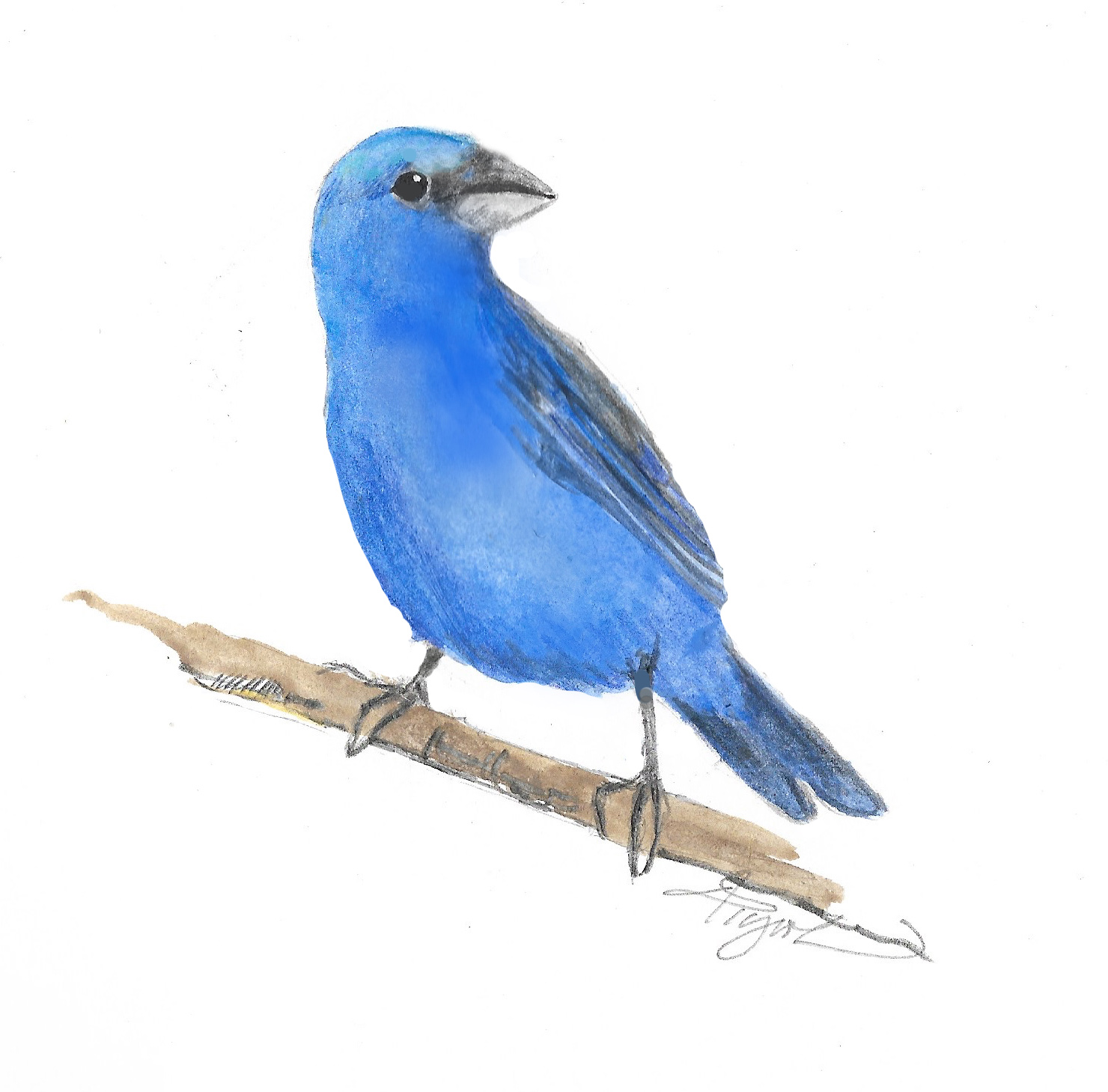There is nothing like the royal blue of an indigo bunting. In the Northeast, they arrive fashionably late to the spring fling, behind the vanguard of migrating warblers and other songbirds.
On my morning walk in my frequent birding spot – my “patch,” as birders call it –I heard the sharp double-noted tune: “Look! Look! What! What! Where! Where! See it! See it!” I peered into my binoculars and found a male indigo bunting perched on a sprawling limb of a red oak. Like the branch, his song reached across the open field, and I could see the conspicuous flash of blue as he moved from branch to branch, singing as he went. Older males arrive back in the Northeast first, which allows them to assert reign over their territory early.
Indigo buntings prefer to occupy the ecotone, or transitional habitat, between open and closed canopy areas, such as forest edges or fallow fields overgrown with shrubs. They seek dense vegetation for building nests and for foraging for seeds and insects. From these places, they can be heard singing in the heat of the day while other songbirds are taking their midday rest.
They are a dimorphic species, meaning that males and females exhibit distinct morphological characteristics. Males are striking blue, while females are brown, with only touches of blue on their wings. This blue color is something of a trick: their feathers don’t contain any blue pigments. It is achieved by diffraction, a process in which the microscopic structure of their feathers scatter light from the sun, reflecting all colors except blue. This also means that depending on how you see the bunting in the sunlight, its color can range from a deep ocean blue to a shallow-water turquoise.
Another trick is how indigo buntings seemingly appear overnight each spring. Like many of our migrating passerines (songbirds), they travel nocturnally – sometimes in one fell swoop – from as far as Panama and northern Venezuela to your backyard or local park. On any given night during spring migration, tens of millions of songbirds are flying to the Northeast in the dark.
Throughout the 1960s, ornithologist Stephen Emlen studied indigo buntings to figure out how they navigate at night. The bunting was chosen because of its relatively long annual migratory flight – up to 2,500 miles roundtrip – and their ability to return to the exact same breeding territory, down to the branch, each spring. The bunting I saw at my patch is likely the same one I admired last year and the year before.
Emlen observed the buntings’ Zugunruhe, or period of migratory restlessness, to determine how they were orienting themselves during spring and autumn migration. He kept some in a planetarium and some outside and placed funnels on top of their cages so that they could only see a certain radius of the night sky, whether real or projected. Emlen recorded their Zugunruhe orientation by placing each bunting on an ink pad. Every time the buntings attempted to fly in a certain direction, ink marks would be left in that area of the cage, allowing Emlen to see which direction they were facing. He found that even with no other visual or social cues except the constellations, buntings “exhibited the ability to orient themselves to the stars.” Under cloudy skies, the buntings continued to try to fly, but their orientation direction became random. By slowly covering up groups of constellations in the planetarium setting, Emlen found that indigo buntings use the northern polar axis of the night sky, specifically constellations around the North Star, as their primary method of migratory orientation. Then Emlen shifted the North Star in the artificial sky to the east or west, and amazingly “the buntings changed their orientation to the new ‘south’ or the new ‘north,’ depending on the [migration] season.” Juvenile buntings learn this pattern during their first summer, likely while still in the nest.
Emlen opened our eyes to understanding how birds migrate nocturnally thousands of miles each spring and autumn. Since then, we’ve learned that migrating birds use a combination of cues –from celestial orienting and recognizing landmarks to methods we may never grasp. Recent research shows birds may even sense the Earth’s magnetic fields through their eyes, with experimental evidence suggesting a radical reliance on quantum mechanics.
Sailors have relied on the stars, and particularly the North Star, to navigate the ocean for centuries. Indigo buntings, as we now know, have done so for millions of years.
Will Durkin is an avid birder and botanist and works as an ecologist in Burlington, Vermont. Illustration by Adelaide Murphy Tyrol. The Outside Story is assigned and edited by Northern Woodlands magazine and sponsored by the Wellborn Ecology Fund of New Hampshire Charitable Foundation: nhcf.org.




